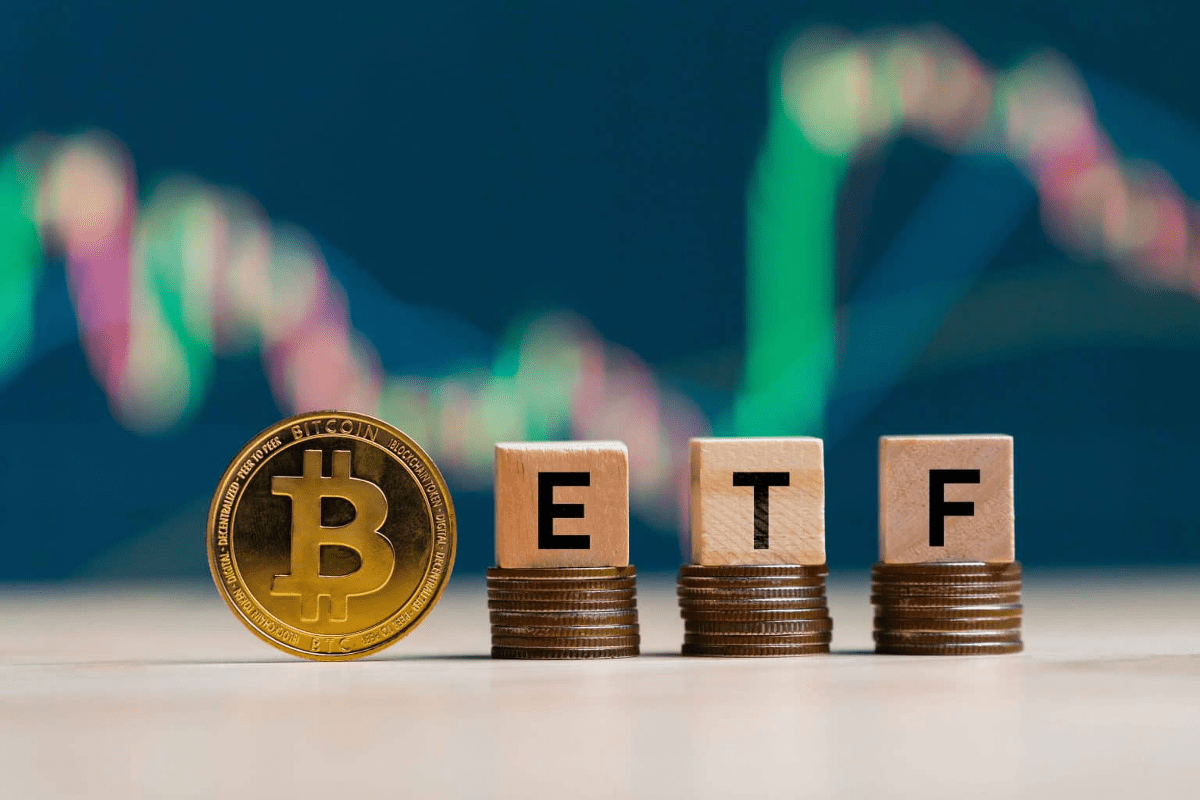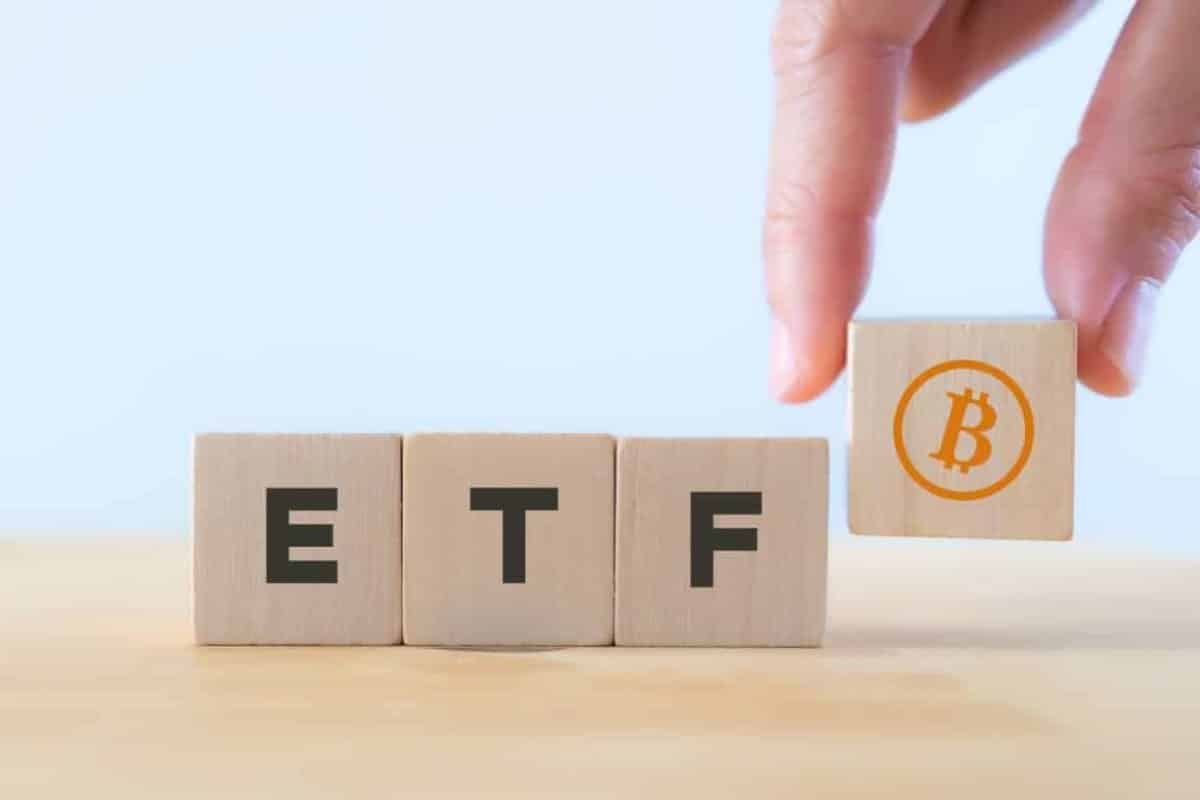Exclusive Interview with Injective Asia Growth Lead Why has it become the dark horse of L1 in 2023?
In-Depth Interview with Injective Asia Growth Lead How has it Emerged as the Dark Horse of L1 in 2023?Interview: Giovanni Chen, Meta Era
With Bitcoin spectacularly exceeding the historic milestone of $40,000, this historical event has once again ignited the entire Web 3.0 community. Looking back at Bitcoin surpassing $40,000 in January 2021, its strong momentum led the way for the bull market frenzy throughout the entire year of 2021.
Now, two years have passed and the hot scene of the Web 3.0 community is once again appearing. Many people are pondering one question: is a new round of the crypto bull market about to begin?
At the same time, just before the recovery of Bitcoin’s price, a project has quietly returned to the previous bull market’s all-time high. Its market value has also reached a historic $2 billion. With the expectation of Bitcoin halving again next year, how high can this project climb to reach another all-time high?
- Inscription Heat’ brings pressure testing, can the public chains other than Bitcoin handle such a surge of wealth and prosperity?
- November’s online transaction volume surges by 62%, taking stock of the seven major advancements in Bitcoin technology
- Japanese social media giant LINE sinks further into Web3, is it for fundraising or revolution?
Indeed, this gives rise to infinite imagination. It is none other than Injective, a star project firmly seated within the top 50 by market capitalization on CoinMarketCap (screenshots and rankings taken from December 12, 2023).

Founded in 2018 by Eric Chen, who was studying at New York University at the time, and Albert Chon from Stanford University, Injective Labs is the main contributor to Injective. As early as the end of 2018, Injective was already the star project of the first phase of incubation investment by Binance Labs. Its mainnet was launched in November 2021. Injective is a Layer 1 blockchain built specifically for finance, providing support for the next generation of DeFi applications. Injective’s reputation has also been greatly boosted by investments from renowned VCs such as Binance, LianGuaintera, Jump Crypto, Hashed, and Mark Cuban.

In the cozy atmosphere of gathering around the fire and brewing tea, Meta Era has invited Justin Wu, Injective’s Asia Growth Manager currently based in Taipei, to delve into the highlights of the Injective project and its recent development plans.
Meta Era: Can you briefly introduce the background, mission, and vision of the Injective project?
Justin: I’m delighted to accept an interview from Meta Era, the Hong Kong Web 3.0 media. This month is truly extraordinary because it marks the two-year anniversary of the Injective mainnet launch in November. Injective has always been built for finance as a Layer 1 blockchain. The vision of Injective is to construct the best infrastructure to help developers in the Web 3.0 ecosystem build the future of finance together. Injective is an open, highly interoperable Layer 1 blockchain, with the main goal of empowering the next generation of decentralized finance. Over the past two years, successful DeFi applications such as decentralized spot and derivative exchanges, prediction markets, lending protocols, and asset management protocols have gradually emerged on Injective.
Meta Era: Why is Injective growing so fast?
Justin: The financial infrastructure module provided by Injective allows any developer to build a fully decentralized on-chain application from scratch, such as an anti-MEV, low gas fee on-chain order book DEX, which is one of Injective’s flagship applications.
Compared to the traditional AMM of DeFi, on-chain order books often experience slippage, meaning there is a gap between the price buyers purchase at and the quoted price. In contrast, decentralized order book prices are transparent and searchable, aligning with the habits of traditional traders. Injective allows third parties to build new platforms, and all on-chain trading platforms can share the same order book and liquidity, greatly improving the efficiency of capital utilization and attracting numerous traders to participate.

From the perspective of development environment, Injective has also launched two sidechains this year, inEVM and inSVM. This means that Injective not only connects with the Cosmos ecosystem but also gains support from Ethereum and Solana developers. They only need to join the Injective ecosystem through RPC’s one-click setup in their Ethereum and Solana wallets. Mature projects built on other ecosystems can seamlessly migrate to Injective. Therefore, bridging and deploying various types of projects such as derivatives and exchanges are welcome.

Meta Era: So, what innovations has Injective used in terms of technology to achieve such DeFi infrastructure on L1?
Justin: From a fundamental technical perspective, the Injective chain itself uses the Cosmos SDK framework to build an interoperable decentralized financial infrastructure layer. This architecture ensures on-chain security and fast block times, capable of handling a large volume of transaction demands.
In terms of technology:
Firstly, as I mentioned earlier, the CLOB (Central Limit Order Book) on-chain, whether for spot or perpetual contract futures, as well as matching engines for options markets, these technologies are already mature.
Secondly, Injective uses a frequent batch auction matching mechanism, where all orders in the memory pool are executed at the end of each block, which takes about 1 second. This delay ensures the prevention of frontrunning MEV (Miner Extractable Value), and the gas fees paid by users are also close to zero.
Thirdly, Injective improves liquidity on the platform by integrating with different cross-chain bridges such as Wormhole, allowing interoperability with other L1s, including Polygon, Solana, and more.
Fourth, Injective uses a decentralized ERC-20 cross-chain bridge that supports interoperability with the Ethereum network. This means that when using Injective, users can utilize assets from the Ethereum network.
Meta Era: This is really interesting! Can we use Metamask on Injective?
Justin: Indeed, you can! In the early stages, when the team decided to develop using the Cosmos SDK framework, they made sure to achieve a certain degree of compatibility with the Ethereum cross-chain bridge and wallet. This strategy was very forward-thinking. Even in 2023, we can still see many users using the MetaMask wallet.
Meta Era: So, Injective’s technological advantages are customization for finance, fast speed, low fees, and integration with mainstream ecosystems and assets. Does Injective have any unique strategies for acquiring users?
Justin: You’re absolutely right. Once you achieve certain technological advantages, you must develop product strategies that meet market demands.
In terms of products, let’s take the flagship version of Injective, Helix, as an example. Helix has introduced some innovative and unique market products, including Celestia (TIA) Pre-Launch Futures, which launched in November. This product allows users to trade futures of tokens before they are even issued. Before the token is released, discussions about the price of these hot assets have already begun. Naturally, this attracts a large number of new users and trading volume. Such products that meet user and market demands are successful cases.

Helix has performed exceptionally well in the past couple of months. The total trading volume of all DEXs on the Injective Chain has exceeded $15 billion, and Helix alone has reached a trading volume of $1 billion in just one month.
Last month, Helix also introduced Trading Bots, which are more advanced functionalities usually found on centralized exchanges like Binance. These functionalities have been integrated into Helix, so in the near future, I believe Helix’s advanced features will surpass existing decentralized exchanges and even rival centralized exchanges.
Another prominent highlight is that Injective has established liquidity partnerships with over twenty market makers to provide ample liquidity for the on-chain order book of Injective. In the Open Liquidity Program, INJ rewards are settled and distributed every month based on the contributions and rankings of the market makers. With improved liquidity, users will have a seamless trading experience. When combined with user-friendly products that meet their needs, this is how user growth is achieved.

Meta Era: Really interesting. I noticed that Injective has been focusing on its ecosystem recently and integrating with many big-name projects. What kind of ecosystem does Injective want to build? What kind of ecosystem collaborations are there in the next 6 months?
Justin: This year is a year of significant development for the Injective ecosystem, including the deployment of applications in various fields such as NFT, DeFi, AI, on-chain, and expanding the user base of the entire ecosystem. For example, the collaboration with Binance Web3 Wallet can attract the integration of users from the largest exchanges. Collaborations with public chains like Klaytn and Kava will also bring new cross-chain environments and asset interoperability for users.
In the next 6 months, the focus will be on RWA, including collaborations with projects like Ondo Finance and Maple Finance. Injective’s DeFi ecosystem will also be expanded, with a wider range of protocols.

Additionally, in January of next year, the EVM-compatible inEVM will be officially launched. This means we will gradually see more projects from Ethereum being deployed on Injective.

It’s worth mentioning that Injective uses the CosmWasm smart contract platform based on Rust, which is very similar to the Rust used by Move language and Solana. Therefore, in the future, we may also see collaborations between Injective and Move language ecosystems such as Aptos and Sui.
Meta Era: Now let’s talk about some of the star projects in the Injective ecosystem. Can you introduce a few prominent projects on the Injective chain?
Justin: Just mentioned the decentralized exchange Helix. It has fast transaction speed and low transaction fees. Helix will continue to list new trading pairs and provide long-term trading rewards to traders.
Mito is composed of many strategy pools and a LaunchLianGuaid that supports asset issuance. In the past few months, a total of 50,000 individuals have been on the testnet, and the next step is to move forward to the mainnet.
Talis Protocol is the first NFT marketplace built on Injective, and it has listed many NFT projects. The NFT field in the Injective ecosystem is also worth paying attention to.
Black LianGuainther is an on-chain asset management platform incubated by Injective Hackathon and officially launched on the mainnet in the past few months. Users are welcome to give it a try!


Meta Era: Next, we have a very interesting topic to discuss, which is the auction and burn of Injective tokens. Can you introduce the token of Injective to the audience from this perspective?
Justin: Of course. INJ is the native token of Injective. INJ has various use cases such as capturing the value of DApps, proof of stake, ensuring security, developer incentives and staking, and protocol governance. INJ tokens can be used in every aspect of the Injective ecosystem, including on-chain upgrades, voting, proposals, and POS staking.
Regarding the auction and burn, 60% of all transaction fees generated on-chain are burned every week. Users must use INJ to bid in the auction, which creates a cyclic use case for INJ. In the INJ 2.0 upgrade launched this year, each on-chain protocol can even contribute 100% of its transaction fee revenue to the auction and burn, making a contribution to the ecosystem.

Meta Era: Now let’s talk about the challenges that Injective is facing. Although Bitcoin has recently risen to $40,000 and market sentiment has improved, Injective’s Total Value Locked (TVL) has decreased from $19M to $12M. Can you explain the reasons behind this and whether there are more plans to increase TVL?
Justin: TVL is determined by many factors, and some protocols are more easily able to attract TVL, such as liquidity staking or lending applications. TVL increases faster in these types of applications. Injective currently has many such applications on the testnet, like the liquidity staking part that includes Hydro Protocol and the recently launched Gryphon, as well as Neptune in the lending field. So I believe that in the near future, when these four or five projects officially launch on the mainnet, the TVL of the Injective ecosystem will take a step forward.
Meta Era: Next, let’s talk about a more lighthearted topic! The founders of Injective Labs come from New York University and have a strong technical background. You also have a background from New York University. What is the atmosphere like within the team? Are you all a group of tech geeks?
Justin: The atmosphere within the Injective Labs team is very harmonious. Most of the team members have a strong technical background, with more than thirty engineers in total, and they are very powerful. Because we are a relatively small team, communication within the team is fast and flexible. We don’t wait for days to pass on messages. Usually, team members will synchronize information immediately on the same day. The internal collaboration is very pleasant and efficient. After joining the team, I found that the atmosphere is one of hard work and dedication. While doing our own work well, we also actively discuss how to help the ecosystem projects grow.
Meta Era: In terms of community and ecosystem, Injective has set up a $150 million ecosystem construction fund to support developers. So, besides participating in general ecosystem project interactions, as far as I know, normal users can also participate in the Ninja Ambassador Program. Can Justin please introduce the content and goals of this program?
Justin: Let’s start with the ecosystem fund. Developing projects requires a significant amount of time and cost, and as the number of development team members increases, the amount of funding required also increases. Therefore, Injective has established a $150 million ecosystem fund to provide project grants using this funding. In terms of grant distribution, Injective bases it on milestone achievements and grants are issued in phases.
In addition, if project teams or developers are interested in contacting VC or investors, Injective also provides channel referrals. However, project teams also need to achieve certain results or demonstrate their strength, such as achieving a certain transaction volume after 6 months of mainnet launch, to gain greater opportunities.
In terms of the community, the Ninja Ambassador Program is Injective’s community activity plan, encouraging users to be active in the community and have deep interactions with the project. Ambassadors are divided into five levels, and as they contribute more, their level will rise. Every month, Injective distributes a certain amount of INJ to ambassadors as incentives, promoting interaction between ambassadors and projects in the Injective ecosystem, and through contributions to the ecosystem, allowing more users to gain a deeper understanding of the Injective ecosystem.

Meta Era: Today, we have really learned a lot of details about the project. Finally, do you have anything special you would like to express or share with our Chinese-speaking audience in the Greater China region?
Justin: Of course! In addition to the development of the English-speaking community, Injective has actually put a lot of effort into the Chinese-speaking community in recent years. Injective has Chinese Twitter and Telegram accounts, and there is also a Chinese channel on the official Discord, synchronizing all Injective ecosystem news. Basically, all announcements and article releases will be promptly translated and organized by the Injective Chinese team. So, for the Hong Kong or Greater China region where Chinese is the primary language, you can quickly get firsthand information. Regarding development, developers’ questions can also be directly asked on Injective Discord or the official Telegram group, and team members will basically respond in a timely manner.
Finally, I want to mention that Injective will be sending multiple team members to participate in the Taipei Blockchain Week in mid-December and will also host activities around Taipei. Interested friends are welcome to sign up and meet offline for exchanges!
Meta Era: We sincerely thank you for your time today! We wish Injective’s ecological development to be better and better.
Summary
Injective has a hardcore and efficient global team behind it, building a decentralized financial infrastructure public chain called Injective. They use powerful technical capabilities and innovation to develop innovative financial modules, providing developers with a diverse toolkit for developing upper-layer applications, and integrating multiple cross-chain bridges to integrate with different public chains. At the same time, Injective has designed powerful liquidity integration capabilities, creating an excellent public chain ecosystem and providing users with diverse DeFi application choices.
In terms of token economics, $INJ has multiple empowering designs, including but not limited to protocol governance, dApp value acquisition, proof-of-stake (PoS) security, and developer incentives. Weekly INJ token auction destruction adds periodic use cases for INJ.
In addition to an excellent development and operation team, Injective has also received endorsements from a group of prominent investors, including LianGuaintera, Jump Crypto, and Mark Cuban, among others. To support the Injective ecosystem project and development team, Injective has established a $150 million ecological fund in collaboration with well-known institutions in the industry such as Kraken Ventures and Jump Crypto, to support the overall development of Injective’s ecosystem.
We are looking forward to Injective’s future breakthroughs in RWA, leading the world of blockchain to link with real assets and providing comprehensive and rich DeFi solutions for crypto users.
We will continue to update Blocking; if you have any questions or suggestions, please contact us!
Was this article helpful?
93 out of 132 found this helpful
Related articles
- Ethereum Core Developers Latest Meeting Summary Goerli Shadow Fork to Take Place Before End of Year, Cancun/Deneb Upgrade to be Tested
- Glassnode Bitcoin pacing back and forth, encountering resistance in its upward movement
- LianGuai Observation | Upbit coin effect reappears, CTC surges nearly 4 times in a single day. What is special about Creditcoin?
- Gods Unchained was delisted by Epic, Immortal Game halted P2E development, and Web3 gaming still faces numerous challenges entering the mainstream.
- Gemini 2024 Cryptocurrency Trend Report Spot ETFs, Halving Cycles, AI and Cryptocurrency Integration…
- The Cryptocurrency Power Trio: Singapore, Hong Kong, and Japan
- Crypto for Advisors: Making Sense of the ETH Stake Rate in 2024 and Overcoming Crypto Learning Challenges






